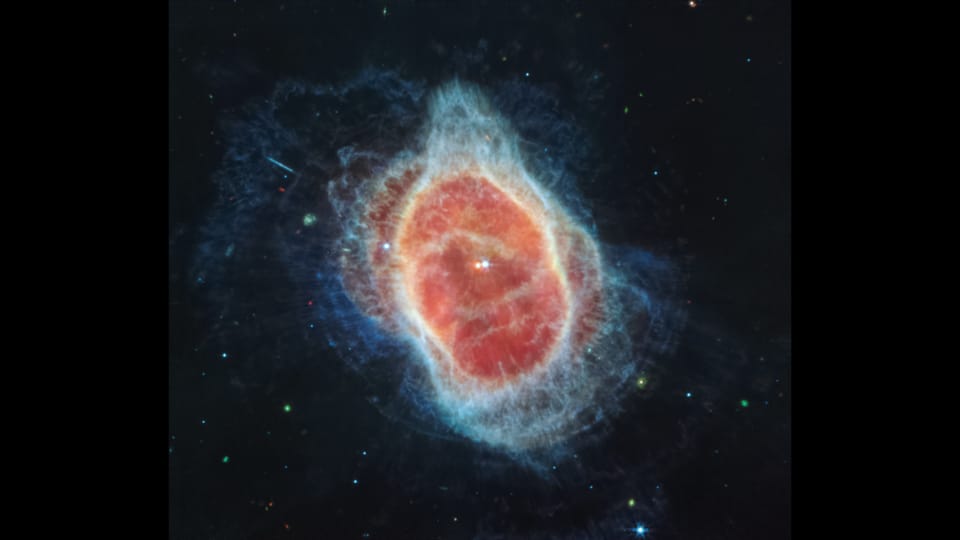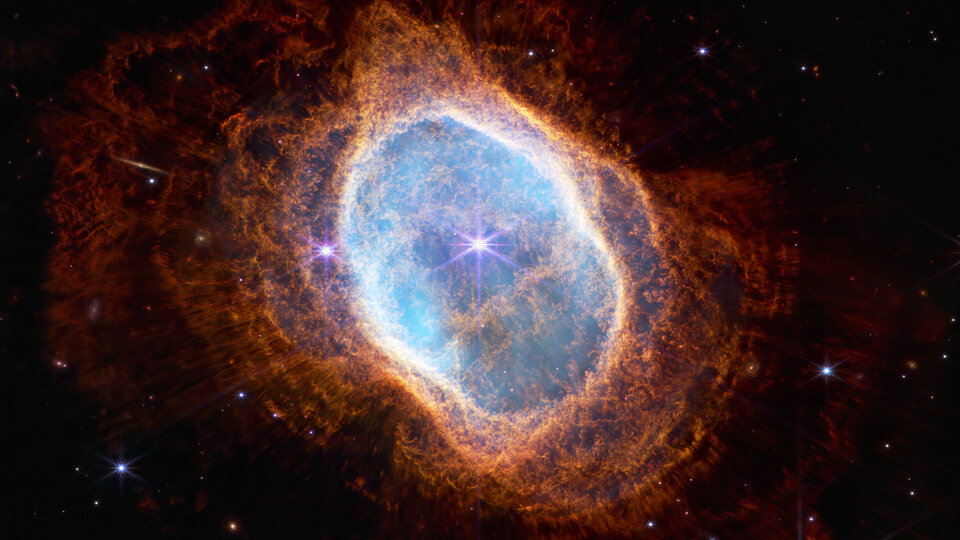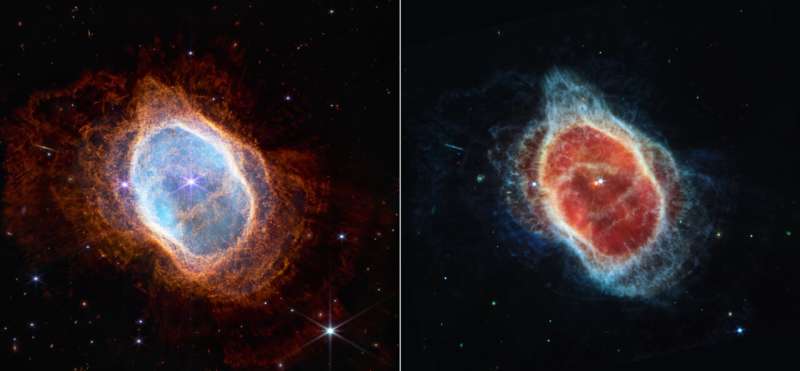For the first time, NASA’s James Webb Space Telescope has shown that the fainter star at the center of this scene is shrouded within dust. This star has been ejecting rings of gas and dust in all directions for thousands of years.
What Is This Southern Ring Nebula?
The Southern Ring Nebula, also known as NGC 3132, is a planetary nebula that was recently photographed by two cameras embarked on the Webb space telescope. It is roughly 2,500 light-years away.
Astronomers will be able to delve into a lot more details about planetary nebulae like this one, which are clouds of gas and dust released by dead stars, thanks to Webb.
Researchers will improve their understanding of these objects by learning which chemicals are there and where they are distributed within the shells of gas and dust.
The Structure Of The Southern Ring Nebula
The Southern Ring Nebula appears to be virtually face-on in this observation, but if it could be rotated to be seen edge-on, its three-dimensional shape would be more clearly seen as two bowls joined at the bottom, opening apart with a sizeable hole in the middle.
The surroundings are shaped by two stars that are tightly orbiting each other. New information about this intricate system is revealed in Webb’s infrared photos.
What Are The Observations Of The Webb Telescope?

While the image from Webb’s Mid-Infrared Instrument (MIRI) on the right reveals for the first time that the second star is surrounded by dust, the image from Webb’s Near-Infrared Camera (NIRCam) on the left is more prominently focused on the stars and their layers of light.
Due to the brighter star’s earlier stage of stellar evolution, it is likely that it will eventually expel its own planetary nebula.

Meanwhile, the nebula’s appearance is influenced by the brighter star. The pair “stir the pot” of gas and dust as they continue to orbit one another, producing uneven patterns.
Each shell reflects a time when the mass of the fainter star got lost. The largest gas shells that were ejected sooner were those that were toward the edges of the image. The most recent are those that are closest to the star. It is possible to trace these ejections and examine the system’s past.
The planetary nebula is surrounded by incredibly thin light rays, according to observations made with NIRCam. Where there are openings in the gas and dust, starlight from the center stars radiates out, much like sunshine passing through openings in a cloud.
Lots more information about JWST’s first image:
Conclusion
Observing a planetary nebula is similar to viewing a movie in extremely slow motion because they last for tens of thousands of years. Researchers can precisely estimate the amount of gas and dust present within each shell as the star ejects.
Even as the star continues to eject material, dust and molecules begin to develop inside the shells of material and alter the surrounding environment.
The interstellar medium soon will be expanding into by this dust, which will gradually enrich the region around it. The dust may end up drifting through space for billions of years and combining with a new star or planet because of its extremely long lifespan.
